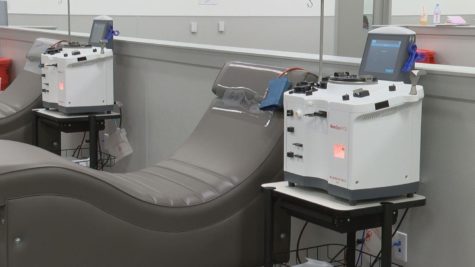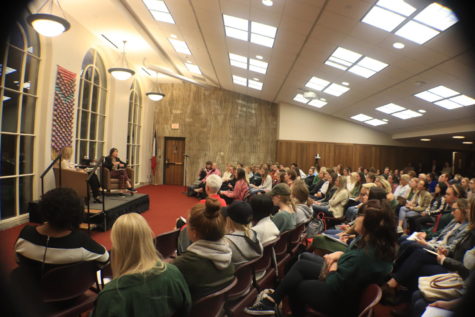How to brace cold temperatures
The Campanile after snow on Central Campus on Dec. 28.
January 20, 2016
Staying warm in the cold is very important this time of year. Suffering through sub-zero temperatures can trigger frost bite and even hypothermia. It is very important to know how to keep your body warm and withstand the below-zero wind chills.
Layer on the layers
Wearing multiple layers of clothing may seem like a pain but it is actually the easiest way to stay warm. Wearing leggings or long underwear underneath jeans and sweatpants will help keep one’s body from losing its own body heat. Wearing hats and gloves will help keep your hands, face and head warm. Those are the easiest places to lose body heat.
The three-feet rule
The three-feet rule pertains to hot objects such as space heaters and fire places. It is important to make sure to keep flammable objects (ex. paper, curtains, clothing) at least three feet from the heat source. Don’t forget to turn off the heat sources before you leave the room. It’s also important to remember to keep space heaters out of the dorms. They are fire hazards. Never use a stove or kitchen top to heat your home.
Car safety
Driving a car in the winter is a risk in itself, but there are a few ways to lessen the risks. Always drive with a full tank of gas. If the car were to go into the ditch, it is important to keep your car running while you wait for help. In case of an emergency, it’s smart to keep blankets, food and water, candles, matches, flashlights, a battery-powered radio and a first aid kit in the car.
Bring a cell phone
When going outside or traveling in a car, make sure to keep a cell phone somewhere handy in case of an emergency. Also, keep in mind that in severe cold temperatures cell phones sometimes don’t work. If you are traveling with a phone in the cold, keep the phone stored somewhere near your body to keep it warm.
Keep hydrated
It is extremely important to keep hydrated in the cold winter months. The dry air can cause dehydration. Keep a water bottle with you when walking to and from classes. Use thermal water bottles to keep your water from freezing. Drinking warm liquids will both help with keeping hands warm and keeping the body hydrated.
Signs of frost bite and hypothermia
Frost bite can appear in places on your body that have little-to-no cover from the cold. Common areas include the ears, face, fingers and toes. Signs of frost bite would be white/pale looking skin, blisters forming and joint and muscle stiffening. With a less severe form of frost bite, treatment includes using heat and warm water to thaw frozen skin. More severe frost bite should be treated by a doctor.
Signs of hypothermia include shivering, clumsiness, lack of control, weak pulse, slow breathing, etc. Hypothermia is extreme and should be treated immediately by a doctor. Hypothermia could result in death if not treated.

















